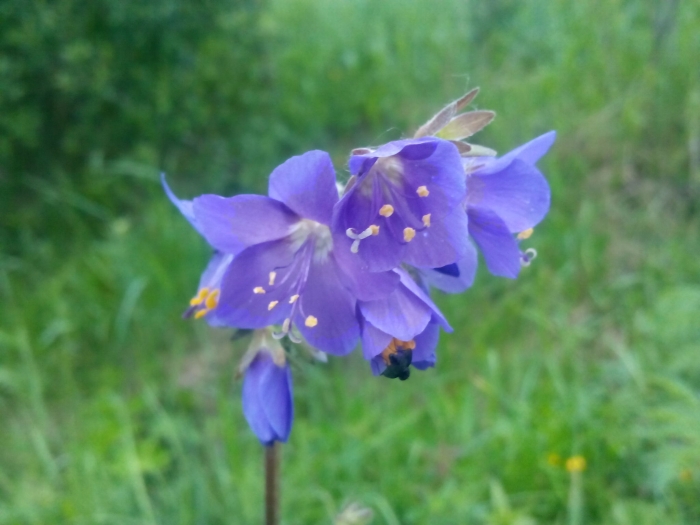Greek-Valerian
(Polemonium caeruleum)
Greek-Valerian (Polemonium caeruleum)
/
/

Yuri
Public Domain





















































Estimated Native Range
Summary
Greek-Valerian is valued for its vibrant flowers and its ability to thrive in moist, woodland garden settings. It is often used in perennial borders, cottage gardens, and rock gardens for its aesthetic appeal and its capacity to attract beneficial insects. The plant is suitable for container planting due to its compact growth habit. Additionally, the fragrant flowers make it a desirable addition to bouquets. Cultivation requires consistently moist, well-drained soil that is rich in organic matter, with a preference for partial shade, though it can tolerate full shade. It is generally hardy, but some cultivars may be less so; for example, ’Blue Pearl’ may act as a tender biennial in cooler climates. Gardeners should be aware that while Greek-Valerian is normally hardy, it can suffer from slug and snail damage, and powdery mildew in humid conditions.CC BY-SA 4.0
Plant Description
- Plant Type: Herb
- Height: 1.5-2 feet
- Width: 1.5-2 feet
- Growth Rate: Rapid
- Flower Color: Blue, Purple
- Flowering Season: Spring
- Leaf Retention: Deciduous
Growth Requirements
- Sun: Part Shade, Full Shade
- Water: Medium
- Drainage: Slow, Medium
Common Uses
Bee Garden, Bird Garden, Border Plant, Butterfly Garden, Deer Resistant, Fragrant, Hummingbird Garden, Potted Plant, Rabbit Resistant, Rock Garden, Showy Flowers
Natural Habitat
Temperate grasslands, meadows, and stream banks in Europe and Siberia
Other Names
Common Names: Blue Jacob’s-Ladder, Charity, Jacob’s-Ladder, Jakobsstige, Blaue Himmelsleiter, Lehtosinilatva, Polémoine, Polémoine Bleue, Valériane Grecque, Fjellflokk
Scientific Names: , Polemonium caeruleum, Polemonium yezoense var. hidakanum, Polemonium coeruleum, Polemonium caeruleum var. album, Polemonium caeruleum var. himalayanum, Polemonium caeruleum subsp. vulgare, Polemonium caeruleum var. caeruleum, Polemonium dissectum, Polemonium gracile
GBIF Accepted Name: Polemonium caeruleum L.